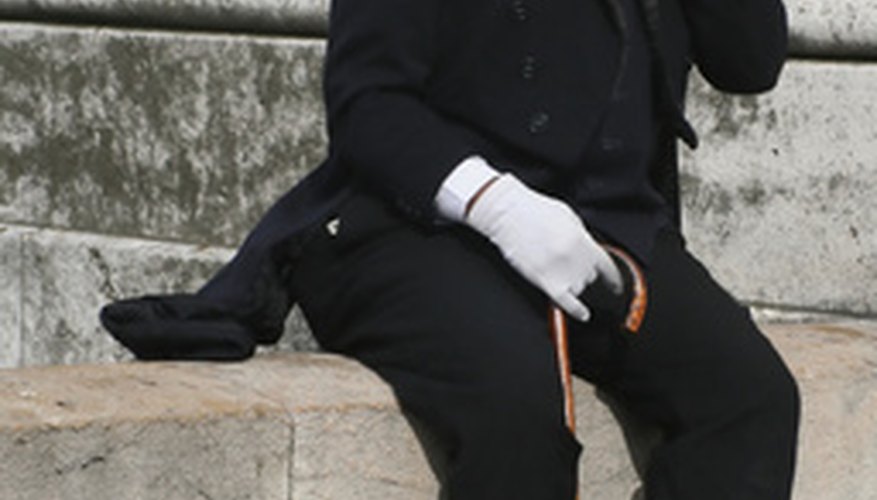Mime is a very old art form dating as far back as ancient Greek and Rome. The defining characteristic of this art form is that the actors tell the audience a story without words. Miming usually involves one or more actors and can be performed on a stage or in the street, with or without music.
Literal Mime
There are two basic genres of mime that other modern forms have since diverged from: literal mime and abstract mime. Literal mime is the more humorous style of mime acting. In this style, the actors tell a story with a conflict and use props and actions that aid in depicting the general plot. This type of mime is generally used in comic and story theatre. A common act depicted by the literal mime is rope pulling. While there is no rope in this act, the mime uses bodily and facial expressions to act out a tug-of-war.
- There are two basic genres of mime that other modern forms have since diverged from: literal mime and abstract mime.
- A common act depicted by the literal mime is rope pulling.
Abstract Mime
Abstract mime, as it sounds, does not convey a story literally to the audience. Rather, the mime artist uses the body and expressions to evoke emotion and encourage viewers to interpret a serious theme. This style normally has no central plot or character, which allows the audience to creatively formulate its own idea on the subject. An example of a theme used in this style of mime might be sorrow or desire.
- Abstract mime, as it sounds, does not convey a story literally to the audience.
Variations

While literal and abstract mime are the most conventional styles of acting in this genre, many variations exist that veer from this traditional idea of mime. The literal and abstract mime style is a European creation, but there are also American forms of mime and even Eastern styles, originating in countries such as India. Other mimes commonly seen after the 1980s include human statues dressed and sometimes painted head-to-toe to resemble characters from different eras. Human statues do not usually perform an act; rather, they stand very still for hours waiting for a tip or an audience member to interact with. Mime is also used in ballet performance and other dance styles to express emotion.
- While literal and abstract mime are the most conventional styles of acting in this genre, many variations exist that veer from this traditional idea of mime.
- The literal and abstract mime style is a European creation, but there are also American forms of mime and even Eastern styles, originating in countries such as India.
Costume
The costume that comes to mind when you think of a mime is probably a white- and black-painted face, maybe accompanied by white-gloved hands. Historically, mimes often wore masks, while the modern mime might not wear any face paint or mask at all. Modern mimes can also be found in clown attire or full-body paint, depending on the type of show they are performing.
